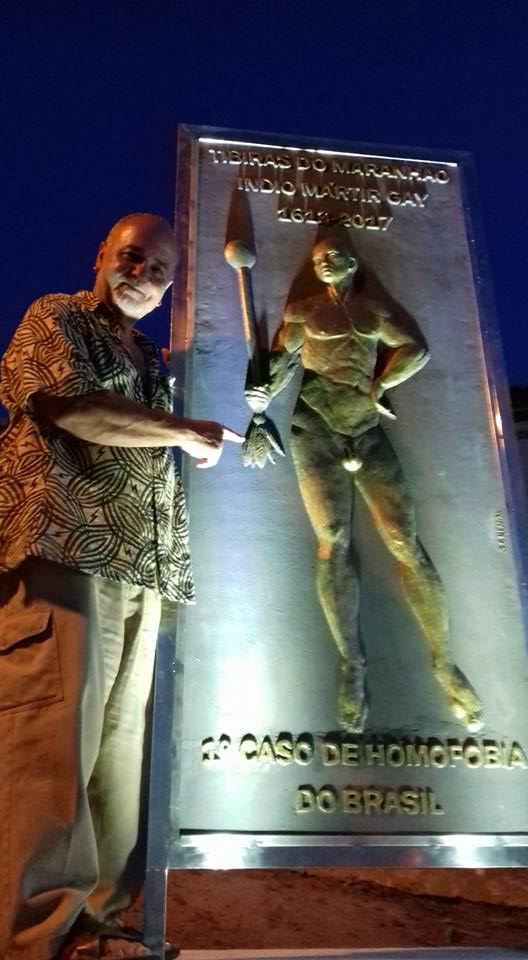Death by Cannon
In 1612 a French expedition departed from Cancale, Brittany in France under the command of Daniel de la Touche, Seigneur de la Ravardiere, and Admiral Francois de Razilly. Carrying 500 colonists and some Capuchin friars, they arrived on the northern coast of what is today the Brazilian state of Maranhao.
The colonists soon founded a village, which they named “Saint Louis” in honor of the French king, Louis IX. This later became Sao Luis in Portuguese.
In 1614, a man of the Tupinamba tribe known as “Tibira” was sentenced to death and publicly executed for the crime of sodomy. He was strapped in front of a canon and blown to pieces.
I assume whoever had him killed deliberately utilized the phallic symbolism of a firing cannon. Since this spectacular execution goes well beyond the usual punishment for sodomy–flogging, beheading, hanging or exile–I suspect Tibira’s accuser, betrayer or murderer was a secret homosexual, and may have even had sex with him.
The reason we know about Tibira’s death is its mention in a travel diary kept by a French Capuchin, Yves D’Evreux. He recorded the execution as he passed through Maranhao. A translation of his diary appears as Voyage au nord du Bresil fait en 1613 et 1614.
Yves D’Evreux, with his vow of chastity, prominently noted his distraction and upset with the nudity and sexual availability of the Tupinamba women. He wrote their sexual activity was diabolically inspired. I’m sure that meant he was often tempted or aroused.
The colony didn’t last long. A Portuguese expeditionary force, under the command of Alexandre de Moura, defeated and expelled the French colonists in 1615.
Four centuries later, a gay activist in northeastern Brazil came across this incident as part of his research into local history. Luiz Mott was a contributor to the 2003 book, Infamous Desire, Male Homosexuality in Colonial Latin America. His chapter is titled: “Crypto-Sodomites in Colonial Brazil.” Mott is also the director of the Grupo Gay da Bahia and one of Brazil’s leading gay activists.
Mott made headlines across Brazil because he stated he wanted the Catholic Church to recognize Tibira as a “queer saint.” While that hasn’t happened yet, he did succeed in having a monument erected to Tibira in Sao Luis in 2016. The inscription reads: “The first victim of homophobia in Brazil.”
The photo shows a smiling Luiz Mott appearing to point to Tibira’s genitals. I don’t know if this is an error or deliberate on his part, but seems undignified for a violent martyrdom.
A short film, Tibira is Gay, by Emillio Gallo, focuses on the experiences of five gay Indian youths in Barreirinha, a remote city in the Maranhao interior. It mentions Tibira’s execution. I found the young men to be very brave to come forward on camera, and earnest, hopeful and lonely. Perhaps the young Tibira was like them.



October 13th, 2017 at 3:58 am
A good niche post.
I have always wondered if condemnation of homosexuality originated in the condemner’s insecurity about their own sexual identity and a fear of what they might have to confront if they were perfectly honest with themselves.
I had a dose of “natural law” thrown at me during the contraceptive debates of my youth. Nobody ever suggested that a spectrum of sexual identity might have been part of “God’s creation”. All very selective and power driven.
Keep up the good work.
[Hope you have a lot more readers than commenters !]